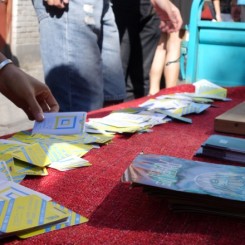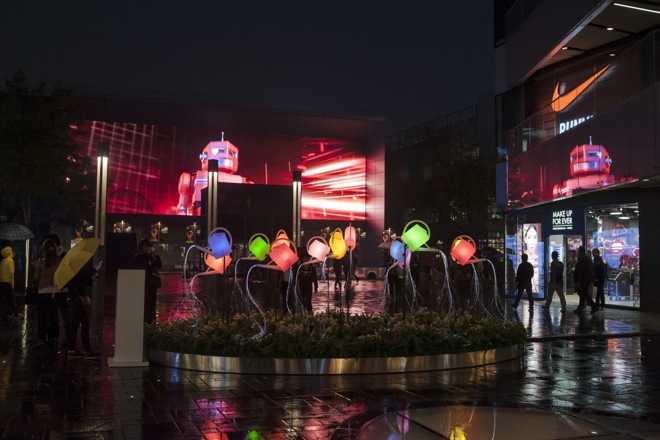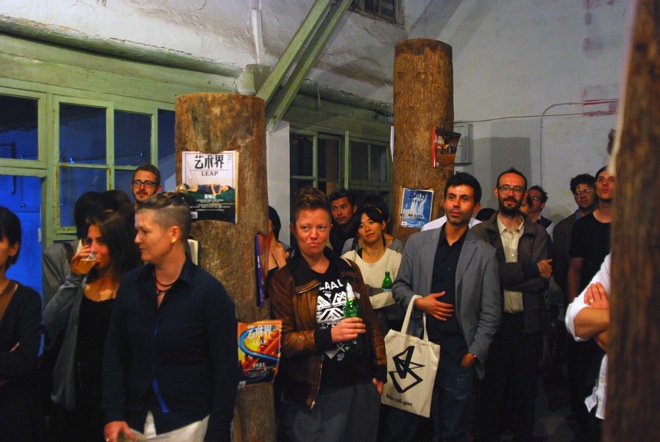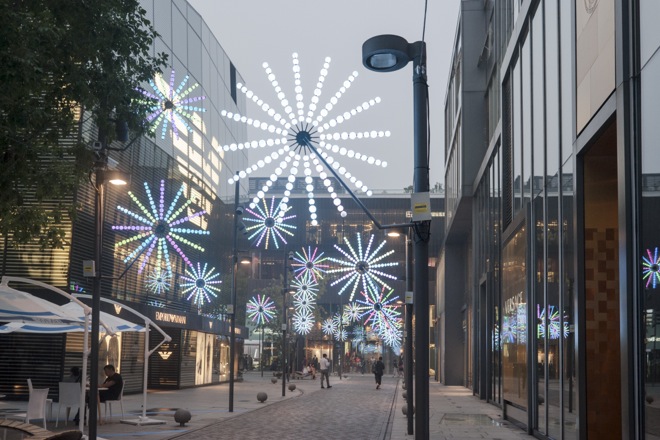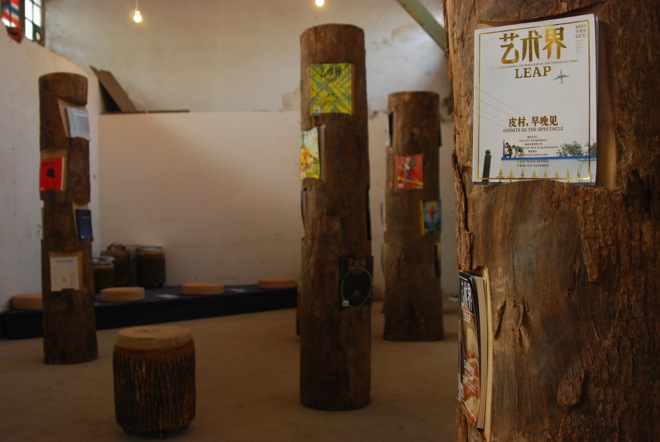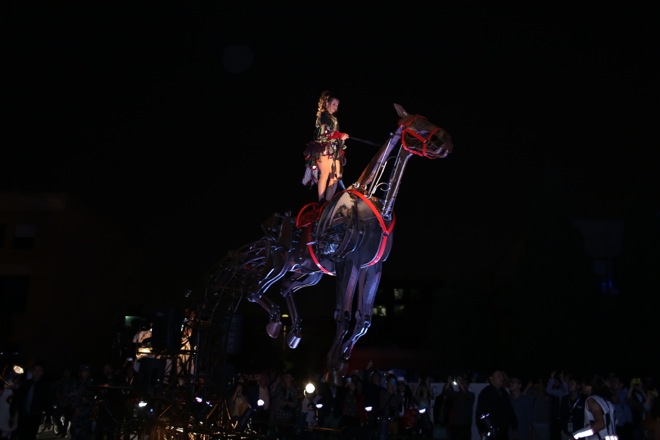For many expatriates, life in Beijing is basically like being a university student: lots of consequence-free hijinks, lots of drinking, lots of naïve but well-intentioned projects involving art that finally go nowhere. Every year around early August, the subject of conversations always seemed to turn to Beijing Design Week and various projects people were launching. One came to expect that strangers would tell you about their organic, artisanal yogurt farm in some godforsaken town in Hebei province at any given moment. I was involved, too; this year, I’d been emailing the director for a week about what I was supposed to do until I saw her in a hotel bar. Unfortunately, neither of us were sober enough to discuss matters coherently.
Beijing is, of course, a great cultural capital; for a complex set of reasons, the scope of the cultural activity going on here is often unknown, underestimated, or misunderstood in the West, but it is the cultural capital of China, after all. Much like New York or London, the annual calendar is punctuated by events such as Beijing Design Week. The role of foreigners in this most Chinese of all cities, however, is obscure. The leading art institution, UCCA (Ullens Center for Contemporary Art), has mostly been led by foreign directors and curators; Beijing Design Week has usually been run by a foreigner (Beatrice Leanza this year). It’s always been a bit of a mystery to me, a cultural foreigner myself, as to exactly what we think we’re doing here, how we interact with the local community, and what role we play in the system. Beijing Design Week 2014 seemed like a great place to find out.
A New Dashilar
To start at the beginning, the Beijing municipal government is actively redeveloping the center of the city; Beijing has been transformed during the past decades, and it’s not uncommon to find large zones filled with rubble. Real estate prices rise every year as the northern Chinese middle class all attempt to purchase apartments here (southerners opt for Shanghai). Problematically, senior citizens and members of the working class hang on in their heritage neighborhoods, doing things like repairing bicycles, cooking noodles and fixing shoes—continuing with their daily routines as if the global economy didn’t exist. It’s tough for the government, though: there’s enough international attention now that they can’t just evict these people; that wouldn’t be sufficiently “cultural.” Instead, they’ve sent in the gentrifiers. One way or another, the neighborhood of Dashilar—a huge dilapidated neighborhood just south of Tiananmen Square—will become another rich, bourgeois quarter, with the urban peasants who live there now shunted off to some distant suburb. This, anyway, appears to be the plan.
Gentrification in China, oddly enough, often seems to be driven by foreigners. It’s hard to find a local who would prefer living an old, heritage neighborhood to a modern high rise. Dashilar has been a site for craftsmen for time immemorial, but that doesn’t mean that the hovels (technically worth millions of RMB) that occupy the space are places Chinese locals would want to live; they are too close in time to need to recapture that “cultural experience.” They can still remember how cold those houses are in winter, the coughing and spluttering of alcoholic neighbors and dirty cabbages lining the streets outside the restaurants. Foreigners, on the other hand, aren’t truly a part of this economic system: they find such areas charming—adventurous, even. Dashilar, this historic slum, is a perfect fit for the kind of people who like living in historic working-class areas in their own countries (like Hackney, Belleville, Greenpoint, Neukölln and the like). It is unfortunate that those old men who have so much character seem to disappear a few years after the artists come in, but that’s just life, right?
I’m Only Going To Mention Events My Friends Organized
A friend opened a space for Design Week in one of these drafty old houses and called it “The Bibliorum.” All sorts of artists involved with the written word were invited to participate in various ways; a loan-library was created and trees installed with issues of Chinese art magazines put inside. It was pretty cool, actually; in the days prior to the opening party, locals actually did wander in sometimes, complimenting the diligent foreigners on their Chinese and wondering why the hell Americans wanted to put books inside trees in that abandoned house next door. The opening party was a blast: le tout-Pékin showed up, drinking whiskey, sharing social media tidbits and hooting with laughter deep into the night. Strolling to the public bathroom midway through, I saw some glum old men smoking cigarettes and watching from a distance. They treated my suggestion that they visit The Bibliorum with the skepticism that such a ridiculous idea deserved; the celebration, 20 meters away from their homes, was a world away.
The next day, a forum called “Making Futures” was on, where various invitees were to discuss craft, design and other aesthetic matters. It’d been a late night for me, and I wasn’t as prepared for my talk as I should have been; the space wasn’t, either, as the (foreign) organizers did their best to remonstrate with the door guards’ refusal to allow visitors in. Finally, a small but engaged audience did show up. It was strange, though, that the talks were in English with no translation. Bottles of water were four times their normal price.
I went home to take a nap, then headed to my friend M.’s party for her project LOOP. She and X. had created a platform of crowd-sourced music to accompany various bus routes in Beijing. It’s actually a really cool idea, because the buses in Beijing go through all sorts of bizarre terrains: skyscraper-y downtowns, Gobi desert fringes, forests and migrant worker camps.
A close friend was going to give a talk somewhere, so his wife picked us up in her Lexus and we inched through traffic; a few kilometers took nearly an hour, and finding a parking spot 20 minutes. Finally, we found somewhere, but it required that we walk through the tourist street of Dashilar to arrive at the space he was going to be speaking at. The streets were incredibly crowded; Design Week coincided with the Chinese national holiday, and tourists from the provinces were wandering around in clumps through ersatz versions of what the neighborhood had been, eating overpriced local snacks.
In the same space that Making Futures had been held, the magazine “Concrete Flux” launched their third issue, and many of the same faces from the other events reconvened—slight reshufflings of the same social deck. It was fun enough, I guess; as various Dutch academics, French embassy staffers and American curators sat down to dinner, it started to rain heavily. N. told me about various interesting talks in the 798 art district he had attended; apparently, they’re shutting factories out there and turning them into yet more art galleries. Great! The conversation at the dinner table—and in fact during the entire second half of Beijing Design Week—turned from self-promotion to shocked commentary about the use of tear gas against students in Hong Kong. The art scene in Beijing has many links with Hong Kong; some people starting booking flights down, apologetically skipping the closing party.
October Begins
The people I’ve described are well-intentioned, and they (we?) are doing something to make Beijing more livable. It’s hard not to want to do something to structure, order and understand this totally chaotic urban experience, swirling as it is with poverty, traffic and social change. It’s probably even a good idea to turn places like Dashilar from rotting working-class terraces into bourgeois-ified neighborhoods; after all, the bourgeois don’t litter as much, are polite and the restaurants they patronize don’t violate the health code. Beijing can’t be all things to all people, so it might as well be a pleasant, prosperous city for rich and middle class people—the poor can go elsewhere. Still, I observed the proceedings with a sense of how far removed these designs seemed from the actual life of the ordinary Beijing residents in whose community they were situated, all the more so since these design forums were funded by the local government, theoretically to enhance the cultural life of the city. I’m not trying to judge; meaningfully engaging with an endlessly-complex Chinese society as a young foreign outsider is very difficult. As Beijing Design Week 2014 closed down, exhibits got de-installed, and the topic of conversations shifted to the next art opening or fashion show, life seemed to go on without much difference; but such events, however unclear they seem now, are the cultural history of our present.
